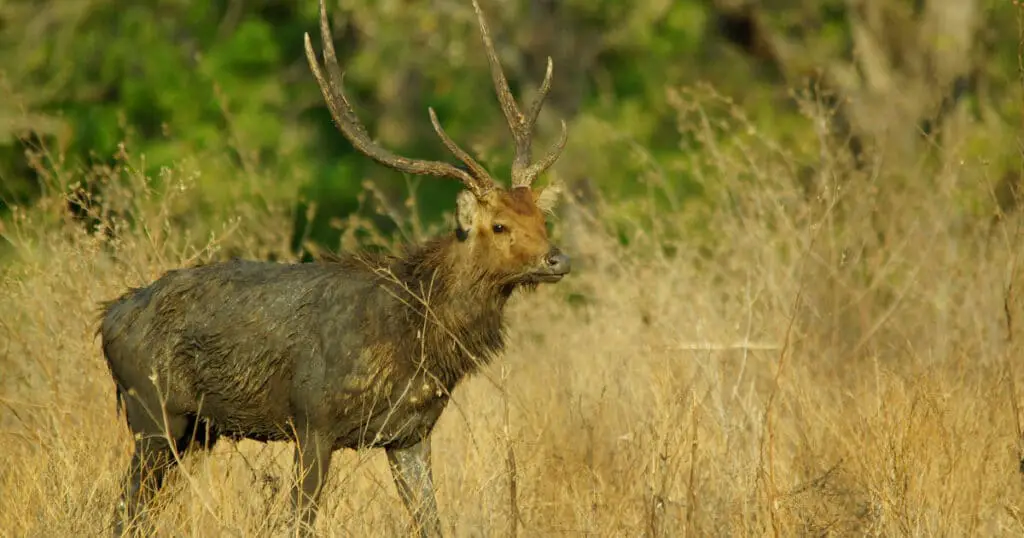The Javan Rusa Deer (Rusa timorensis), also known as the Sunda Sambar, is an impressive-looking species of deer native to the Indonesian isles and East Timor. It has been introduced in a number of locations throughout the southern hemisphere, where herds of Rusa Deer can be found today.
On this page we’ll discuss information about the Sunda Sambar, including its size, what it looks like, where it lives, how it reproduces and unique behavior and habits.
What Size is the Rusa Deer?
- Head & Body Length – 130 to 210 cm
- Shoulder Height – 80 to 110 cm
- Tail Length – 10 to 30 cm
- Weight – 50 to 115 kg
What Does the Javan Rusa Deer Look Like?
The Sunda Sambar resembles the other species of Sambar such as the Indian Sambar Deer, but is smaller in size.
The Rusa Deer’s coat is a grey-brown in color and is fairly uniform without any spots. The underparts and the insides of the legs are paler in coloration.
The Sunda Sambar appears a rather short and stocky deer, this is because of its short legs and strong body.
Only the males have antlers. These are three tined, and grow in a slight lyre shape.
The backwards tine of the antlers is larger than the two frontal tines. They grow up to 75 cm in length.
Female Rusa Deer are smaller in size than the males.
Where Do They Live?
Where are the Sunda Sambar native to, and where do they live today? What is their preferred habitat? We’ll answer those questions here.
Rusa Deer Distribution
The Sunda Sambar is found on a number of Indonesian Islands. It was probably introduced to many of these islands by man. It may have originated on Java and Bali, but we can not be sure as to its exact original distribution.
The Javan Rusa Deer is not at any conservation risk and is a relatively common deer in Indonesia.
Rusa timorensis Habitat Preferences
The Sunda Sambar is an adaptable species of deer, and one which is able to live in a wide variety of habitats, including forest clearings, grasslands and marshy river areas.
This adaptability has enabled it to remain common.
Mating & Reproductive Cycle
The main breeding period takes place between July and September for this species of deer.
At this time the male herds join with the female herds, and males compete with each other for dominance and the right to breed.
After an 8-month gestation period mostly a single young is born. The young are mostly born in March or April. The young accompany their mother shortly after being born. Rusa Deer fawns are not spotted at birth, and are weaned at 6 to 8 months of age. Sexual maturity is reached at 18 months of age.
Unique Behavior & Habits
The Sunda Sambar deer prefers to move and feed in the evenings – a way to avoid human contact. Most consider the Rusa to be a nocturnal deer.
Rusa Deer feed on various types of grass.
Although other types of Sambar are solitary, the Sunda Sambar is sociable. You’ll find it living in small groups of up to 25 animals of the same sex. Males and females only meet and co-mingle during the rutting period in the autumn.
Rusa timorensis has a number of predators including the tiger, the python and the crocodile.


